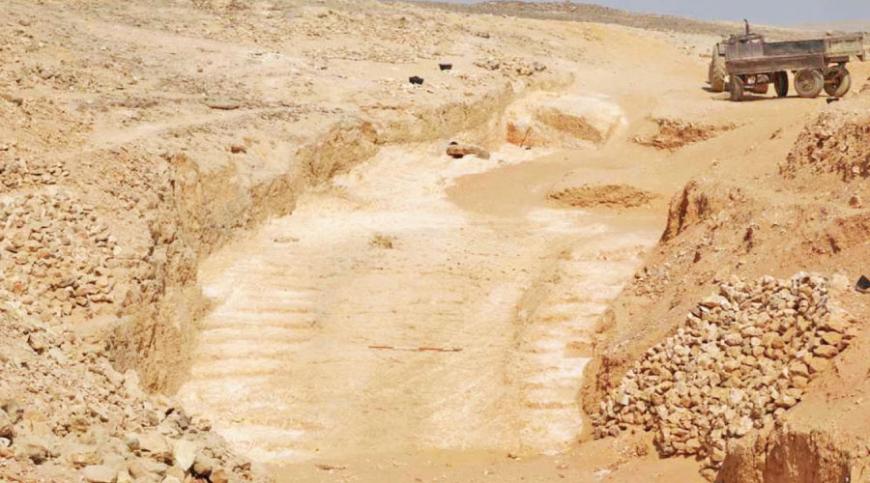
Standing proudly at 139 metres (456 feet) tall, the Great Pyramid was the world’s largest human-created structure for 3,871 years. Over 4,500 years ago, they somehow managed to transport vast blocks out of the quarries and across the desert, but how?
Just north of modern-day Luxor, an important clue has been stumbled upon. For the first time, archeologists have discovered evidence of a sloped ramp with two sets of steps and numerous postholes on either side that was clearly used to help hoist blocks from a quarry via a sled. With the help of manpower and ropes, the wooden posts were used to leverage the sled uphill.
As per an announcement by Egypt’s Ministry of Antiquities recently, it is simple yet clear evidence of a ‘unique system’ to move and pull blocks. Ramps seem like an obvious answer to the question, and archeologists have long theorized that they were heavily relied on during the pyramid’s construction, but this is the first time that researchers have actually discovered physical evidence of their use.
An equally interesting feature of the discovery includes at least 100 engravings along the slopes that depict the organisation of workers and their construction campaigns from the time.
The steps and slopes were discovered near Hatnub, once home to seasonal workers and a vast Egyptian alabaster quarry. Much of the pyramids were made of limestone, while many of the sculptures, floors, and walls were crafted from alabaster. It’s believed to date to the reign of King Khufu in the 4th Dynasty, which ties up nicely to the time of the Great Pyramid’s construction.
“As this system dates back at least to Khufu’s reign, that means that during the time of Khufu, ancient Egyptians knew how to move huge blocks of stone using very steep slopes. Therefore, they could have used it for the construction of his pyramid,” Yannis Gourdon, co-director of the joint mission at Hatnub, said.
As previous studies have shown, it’s likely that the ancient Egyptians used large sleds and ropes to pull the pyramid’s 2.5-ton building blocks and statues across the desert. It’s then likely that they poured a small amount of water across the sand to significantly reduce the sliding friction, a neat little trick that allowed the Egyptians to cut the number of workers needed by half.
The slope: Note the steps on either side, which were used to help to sleigh up the hill. Egyptian Ministry of Antiquities
Drawings that explain some of the workers’ campaign at the quarry. Egyptian Ministry of Antiquities
